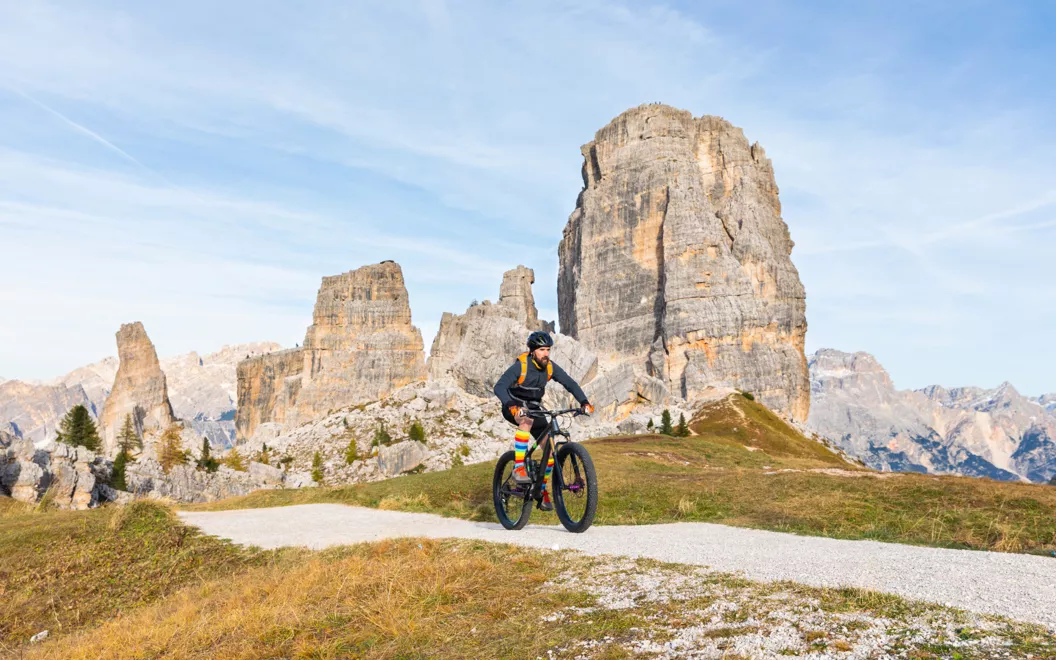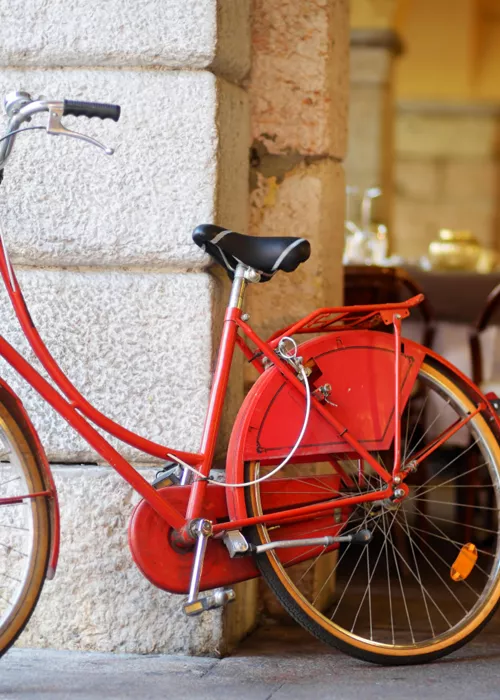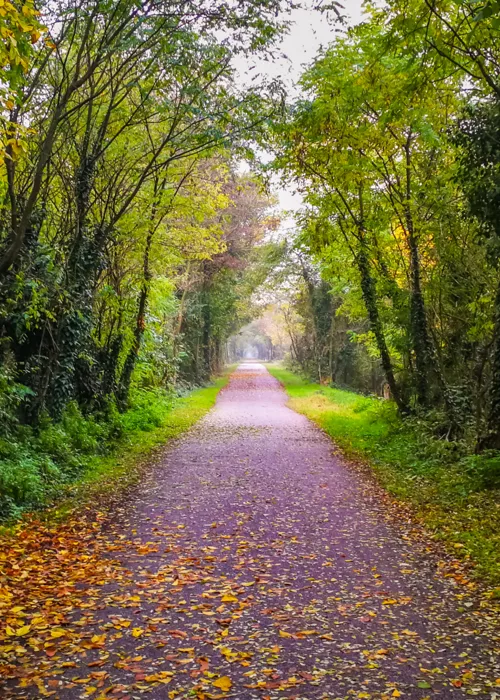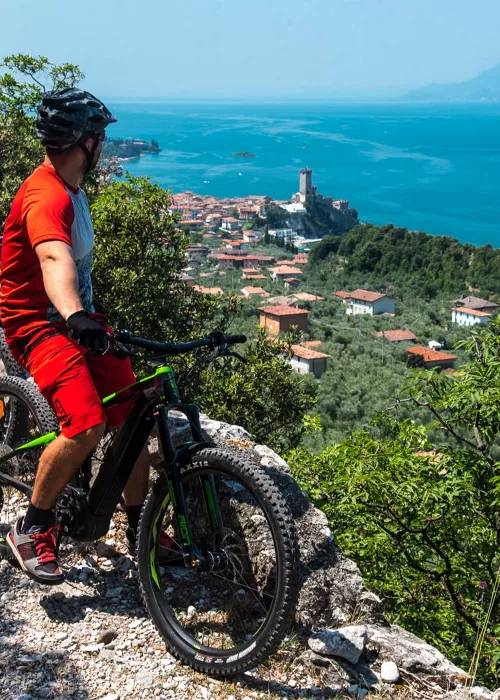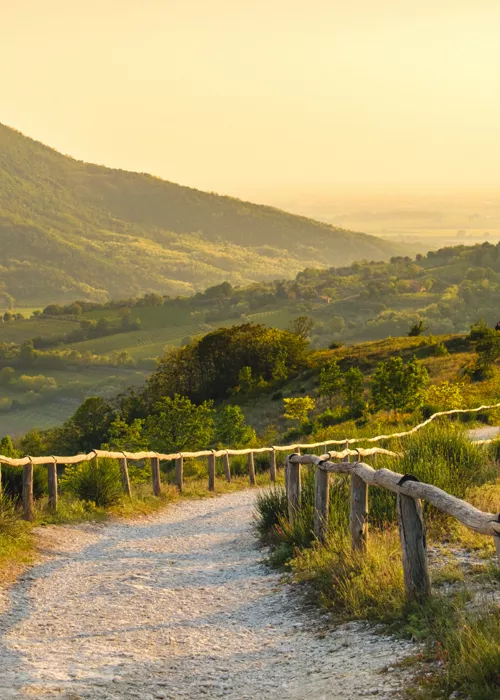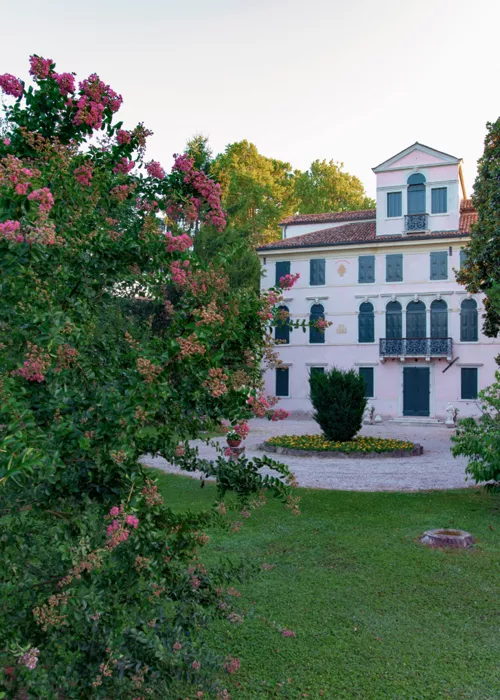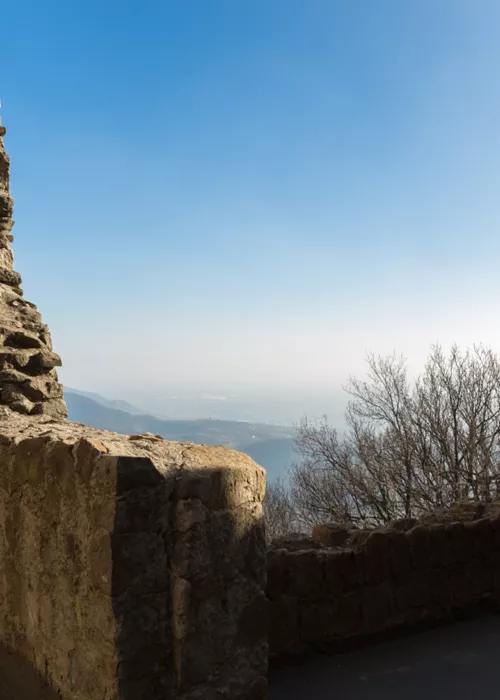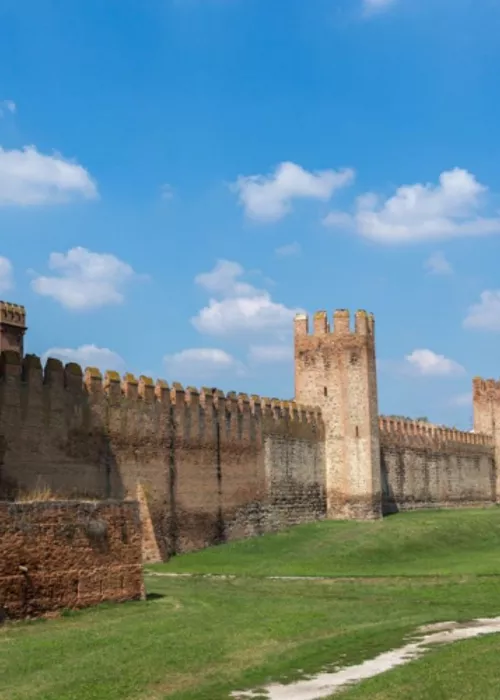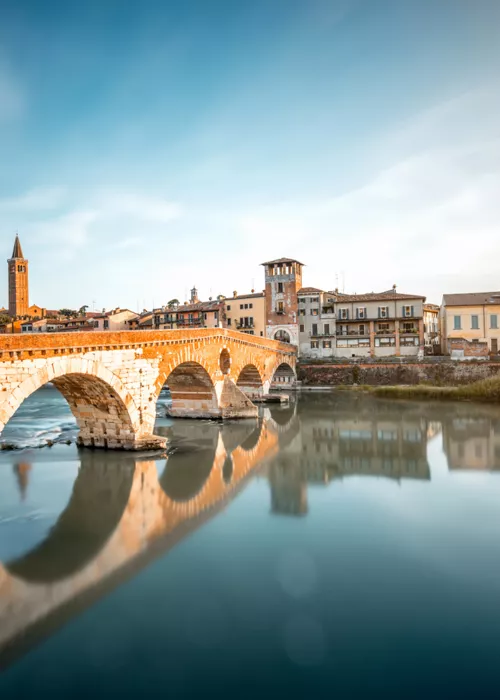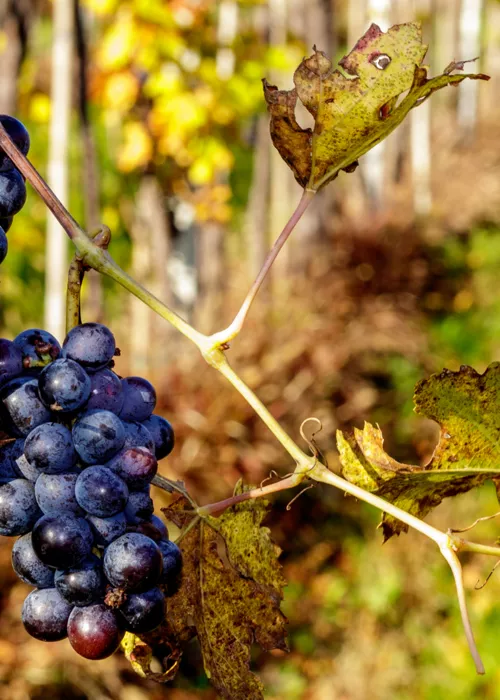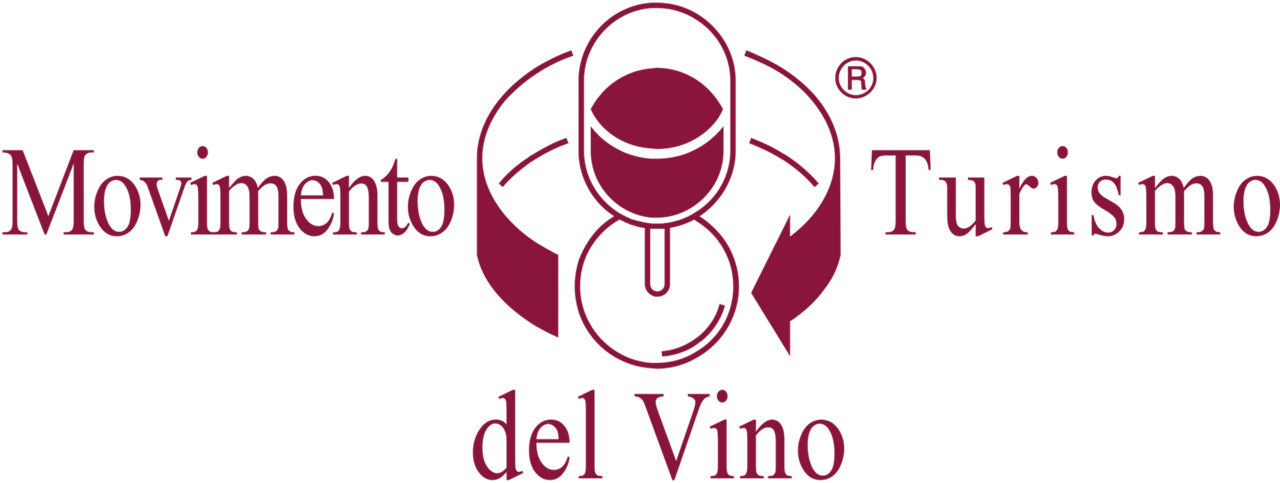Cortina d'Ampezzo-Pieve di Cadore

Beginning at the Cimabanche Pass, located between the Ampezzo and Pusteria valleys, this route offers constant gradients, on a combination of dirt and tarmacked roads. Find yourself immersed in lush conifers and holm-oak forests that breathe life into the “Lunga via delle Dolomiti” cycleway. The route is easy-going but keep an eye out for pedestrians near Cortina d'Ampezzo.
Past the pearl of the Dolomites and UNESCO heritage sites, the route continues south along the Boite river to San Vito di Cadore, home to the mighty Antelao and Pelmo mountains. As the river veers towards the valley away from the cycle route, in Borca di Cadore you ride across new cycle bridges and through old tunnels, making your way through the mountain towns of Vodo, Venas, Valle and Tai.
In Pieve di Cadore take a moment to admire the house where the painter Titian was born, the Roman archaeological site, the Santa Maria Nascente church, the Ethnographic Museum and the Glasses Museum. Then it’s back on the saddle to Calalzo di Cadore, on the shores of Cadore lake.
Pieve di Cadore-Belluno

From Pieve di Cadore, the town of glasses, a new cycle path leads down towards Perarolo di Cadore. The gurgling of the Piave river resounds throughout the wild landscape.
Ospitale di Cadore is home to the Val Montina alpine wilderness area: the cycle route is suspended over the river, crossing the gorge overlooked by the village of Castellavazzo. At the Museum of Zattieri, you can discover the secret of the floating city of Venice and learn about the trades that depend on the forest and river. You will then notice a change in the landscape: the valley widens towards Longarone, which is sadly known for the Vajont dam and the Monte Toc landslide tragedy. The route along the Piave river continues to Soverzene, before turning towards Ponte nelle Alpi and arriving in Belluno.
Belluno-Vittorio Veneto

Allow time for traffic delays when departing from Belluno, but it will be worth it once you reach Lago di Santa Croce, the largest lake in Belluno, which you can reach by crossing the Piave river and following the bank of the Cellina river. The pristine surrounding Cansiglio forest is a source of timber for the Venice Arsenal.
Farra d'Alpago offers the longest descent of the route, through the Val Lapisina. The old Strada Statale di Alemagna is a one of a kind, passing underneath the highway viaducts. Down the route are the Morto and Restello lakes, the latter famous for the medieval tower of San Floriano defending the village of Serravalle, a district to the north of Vittorio Veneto.
Vittorio Veneto-Treviso

After marvelling at the steps leading from the Serravalle cathedral to the Sanctuary of Saint Augusta, take the cycle path along the Meschio river.
It’s impossible not to get distracted along the way: to the south, the Conegliano vineyards adorn the hills, while the Castle, home to the Civic Museum, stands proud over the endlessly tumbling hills of the Veneto countryside. The last hill to the right is Montello, leading up to Montebelluna towards Treviso.
Pass through the monumental Porta San Tomaso marble gate to access the historic centre, then head towards Piazza dei Signori.
Stage 5: Treviso-Venice

Dazzled by the Renaissance walls of the historic centre, the cathedral, the Palazzo dei Trecento and the Casa dei Carraresi, the adventure continues.
On the outskirts, a walkway leads to the haunting Cimitero dei Burci boat graveyard.
In Casier, the riverbanks follow the large bend where the most important Sile river port once stood. In the town of Quarto d'Altino, detour along the ancient route of Via Claudia Augusta Altinate to explore the Roman Altinum ruins at the archaeological museum.
Returning to Venice, you can traverse the suburb of Mestre or follow the Sile river to the open sea, passing through Caposile, Jesolo and Treporti.

